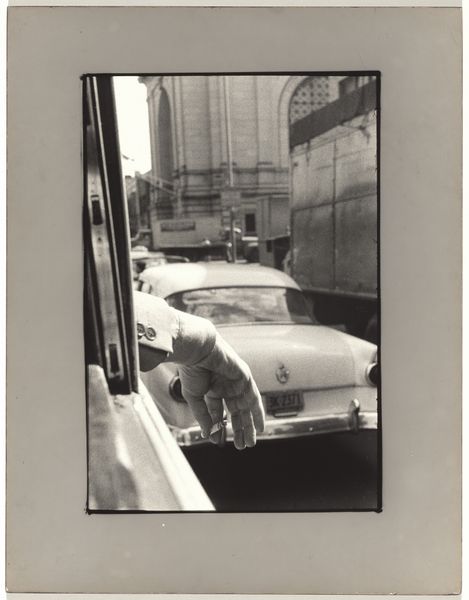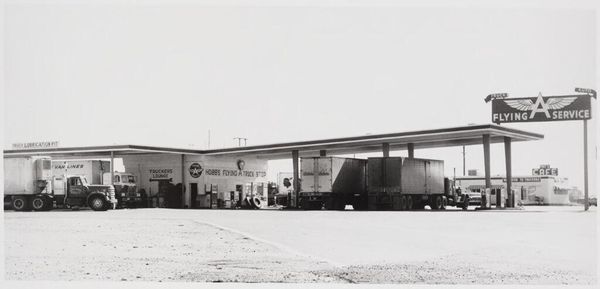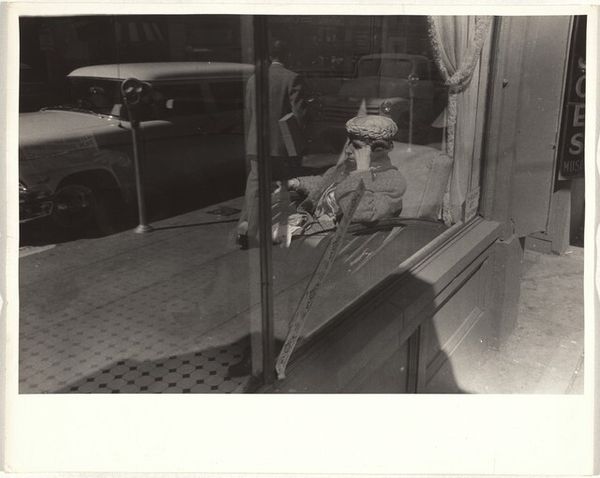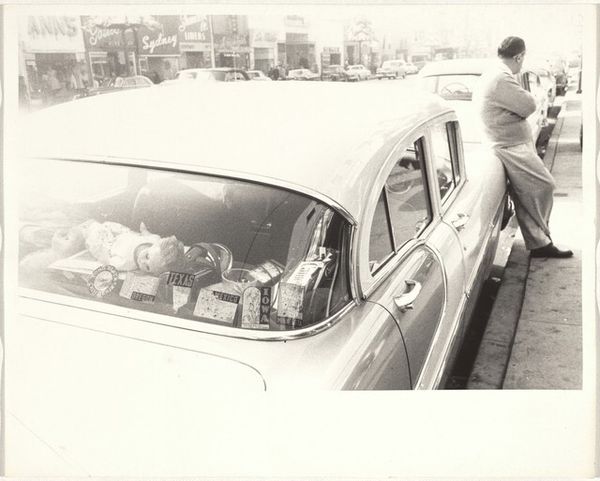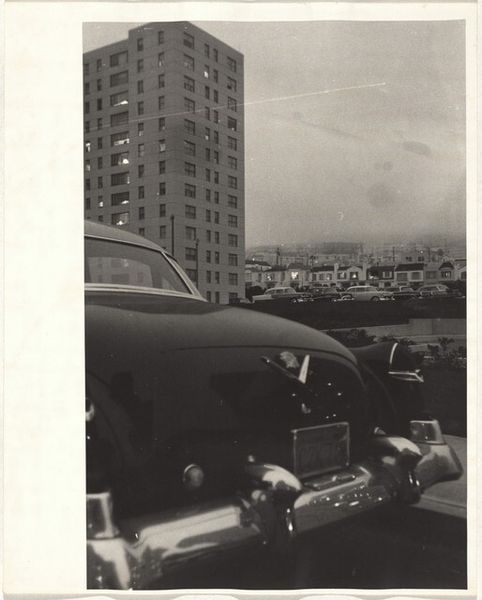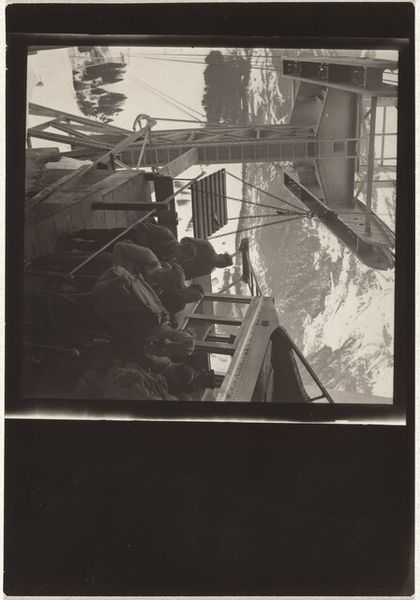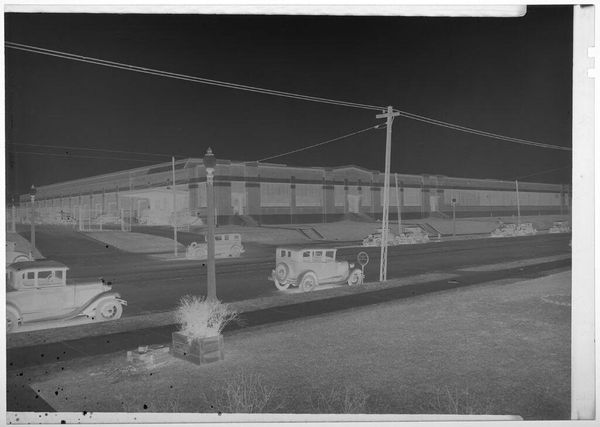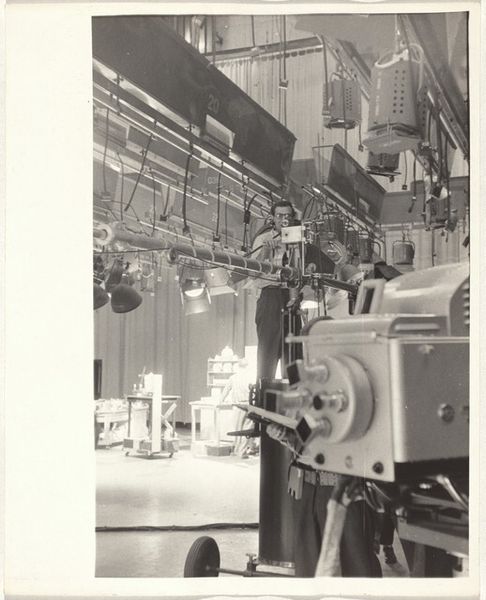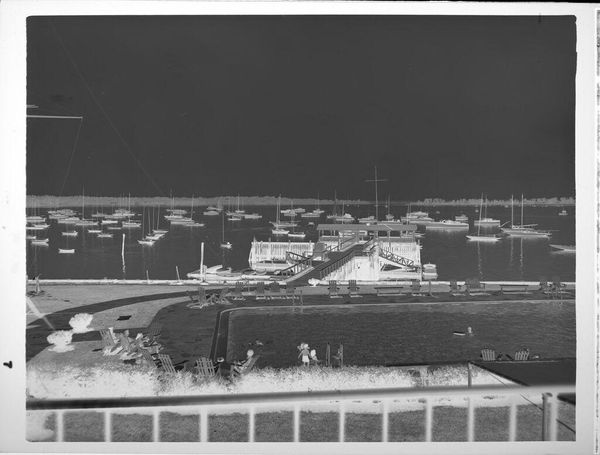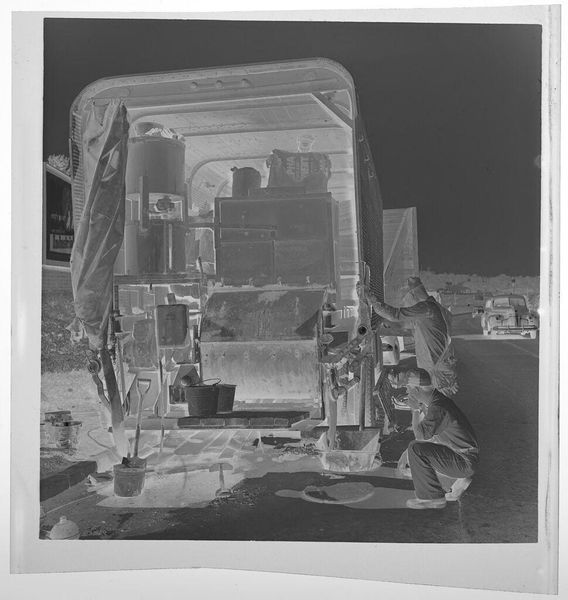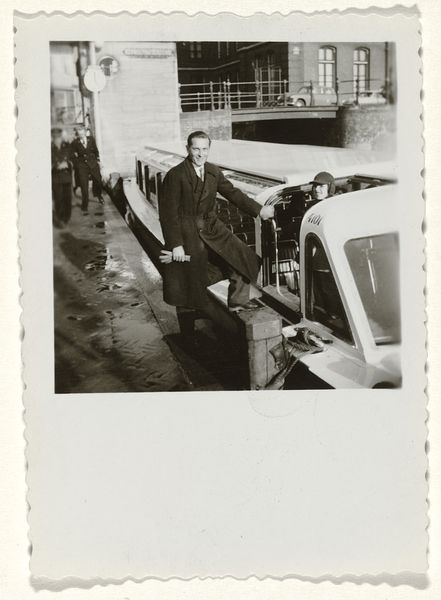
print, photography, gelatin-silver-print
# print
#
landscape
#
archive photography
#
street-photography
#
photography
#
historical photography
#
gelatin-silver-print
#
realism
Dimensions: sheet: 25.2 x 20.3 cm (9 15/16 x 8 in.)
Copyright: National Gallery of Art: CC0 1.0
Curator: Robert Frank's photograph, "Truck stop--New Mexico," taken in 1955, presents us with a seemingly ordinary scene, rendered in gelatin silver print. What strikes you about it initially? Editor: It feels incredibly claustrophobic, like I'm trapped between these hulking vehicles. There's something desolate about it too, even with all that machinery present. It’s almost confrontational, wouldn't you say? Curator: Absolutely. Frank was acutely aware of the stark realities of 1950s America. His outsider perspective, as a Swiss immigrant, allowed him to capture a grittier, more unvarnished view. This photograph reflects the burgeoning car culture and its impact on the landscape and working class. The perspective here, this near collision of the viewer with the vehicles, seems intentional, echoing similar techniques used at that time. Editor: It's that perspective that gets me. I can almost smell the diesel! It really slams you into that specific moment, doesn’t it? There's nothing romantic about this vision of the open road; it's more about the exhaust fumes. The banality, too. One has the sense of not just the place, but also the people within the image. Are they being served? Are they just stopping here? How long have they traveled to get here? Curator: The absence of figures, save for maybe a silhouette through the window, is telling. The photograph highlights infrastructure over human interaction. Think about what it implies regarding mobility, labor, and perhaps even a sense of alienation, all wrapped up in this deceptively simple roadside tableau. Also, what these stopping points imply about a growing American identity that's changing over time as people change in identity too, as Americans. Editor: True, the photograph is far from a postcard. It's less interested in beauty than in… truth. It's uncomfortable. I think what moves me the most is its understated power, the way it uses everyday imagery to get at a wider truth. Curator: And, perhaps, the way it continues to resonate with our contemporary moment, forcing us to confront questions about infrastructure, identity, and the human impact. It speaks to this continuous, changing American Identity, something Frank managed to nail the vision of at this time, specifically. Editor: Exactly, what's also moving for me is also thinking about how different that perspective could be in a photograph today, with the advent of cell phone imagery, Instagram, everything else. It does still speak, however, very deeply, with the passing of the age of print, let alone gelatine. The stark realism gives a perspective and understanding you couldn't experience anywhere else.
Comments
No comments
Be the first to comment and join the conversation on the ultimate creative platform.
